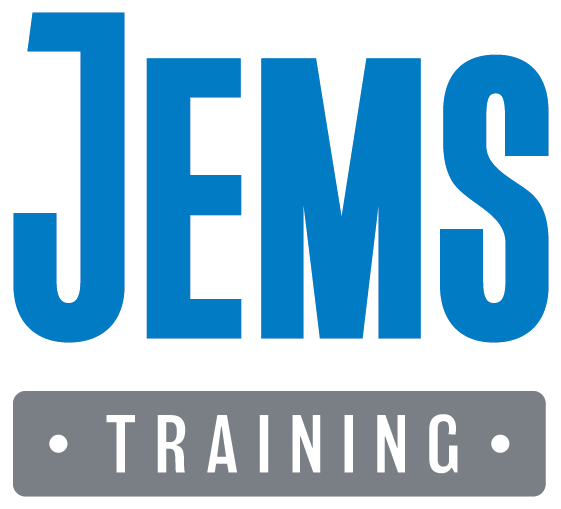In this course, Deputy Chief Michael McCart discusses how the fire service is in need of evolving to having safer, smarter ambulances. McCart explains current ambulance features and how they are work in order to keep passengers and crew members safe. In addition, McCart discussing the how's and why's ambulances need to be adapted to be safer and smarter and the advice he is giving in order to make this possible.
Course Type: Full-length Course
Course Duration: 60 min
As an emergency medical technician or paramedic, you are responsible for treating patients on the scene to your scope of practice and getting patients to the hospital quickly and safely. This can be difficult, especially when driving in unfamiliar territory or dealing with traffic congestion. This course will discuss critical elements of driving emergency response vehicles safely and effectively.
Course Type: Full-length Course
Course Duration: 60 min
Social media has evolved into a regular part of how our society shares information, opinions, and perspectives. By some measures, it has become the primary method used many members of society to express themselves altogether. This course examines our tendency to express our stressors through social media and the implications it can have that are specific to EMS providers. We’ll also examine best practices for both EMS department social media accounts as well as personal EMS provider accounts.
Course Type: Full-length Course
Course Duration: 60 min
?Lifting patients onto stretchers for transport is a common occurrence in EMS. Unfortunately, lifts performed improperly can lead to EMS providers getting hurt. In this course, we'll discuss the potential hazards from finding patients in hard to reach locations and the need for utilizing proper lifting techniques to prevent injury.
Course Type: Full-length Course
Course Duration: 60 min
Recent societal events have focused on misconduct by law enforcement and improper use of chokeholds and other restraint mechanisms. But police officers are not the only ones who may act improperly, causing harm to others. It happens in EMS agencies, too! This dynamic and thought-provoking session will discuss the legal liability and the untoward medical effects of physical and chemical restraints. In this course, you'll hear from two legal and clinical experts as they address the challenging “dual role” of the EMS practitioner in ensuring both patient and bystander safety and at the same time remaining an ardent patient advocate when dealing with difficult patients or persons in custody.
Course Type: Full-length Course
Course Duration: 60 min
Keeping an ambulance and the equipment inside clean is vital to protecting the crew and the patients. In this course, Katherine West discusses the importance of keeping ambulances and their equipment clean. We learn about the importance of cleaning, high touch areas, new cleaning products and technologies, as well as, following CDC and OSHA guidelines.
Course Type: Full-length Course
Course Duration: 60 min
The importance of end-tidal CO2 (EtCO2) and capnography cannot be overstated for prehospital providers. This JEMS CEU course discusses the importance of EtCO2 and how to use PQRST method for interpretation using clinical applications and examples. You’ll also delve into using EtCO2 to identify states of shock and inform pain management care. This course will also discuss capnography in EMS, including interpreting waveforms and using interpretations to inform your treatment for intubated and non-intubated patients. Lastly, you’ll learn the pros and cons of using tools (such as colorimetric devices, capnometry, and capnography) to confirm proper airway placement and the risks for not using them.
Course Type: Full-length Course
Course Duration: 60 min
Your agency experienced an incident resulting in a sentinel event. Now what? Reacting quickly to the incident with a prescribed procedure and actions can demonstrate your commitment to safety and ensure the proper information is collected to fulfill an incident investigation’s ultimate purpose, not assigning blame but the prevention of future incidents. Evidence-based investigations are the most necessary after accidents to determine how and why these accidents have occurred. In this course, Peter Dworsky discusses the need for evidence-based investigations, how to conduct an evidence-based investigation properly, and explains how to determine the causes of events, and what to do in the aftermath.
Course Type: Full-length Course
Course Duration: 60 min
Crew Resource Management (CRM) or non-technical skills are the social, cognitive, and personal resource skills that complement a worker's technical skills. Initially developed in the air transport industry, CRM training has been adopted by all branches of the United States military and is being integrated into both the medical and emergency services.
Course Type: Full-length Course
Course Duration: 60 min
The EMS way tends to be “That is how we have always done it.” This most dangerous statement illustrates to not change anything, do what you are told, and be quiet. Are we still doing things this way and, if so, why? Our world is ever evolving, and things need to change, but that means working out our differences. Let’s talk about the everyday conflict we encounter and make things more "fluid" to let this change take place.
Course Type: Full-length Course
Course Duration: 60 min
Events involving demonstrations and protests disrupt normal EMS operations and require a coordinated medical response with properly trained and oriented personnel who can move on a moment’s notice and in accordance with a special command and control structure. Planning and capabilities to support Civil Disobedience Units and other law enforcement assets during these special events require a high level of coordination between all public safety entities and the medical system. Traditional EMS training does not account for operating in these dangerous and fast-changing environments and is not generally adequate to support these challenging situations. This course will address these differences and how EMS can support the needs of both law enforcement and the entire community during civil disturbances and unrest.
Course Type: Full-length Course
Course Duration: 60 min
EMS research and evidence-based guidelines guide and inform how we treat our patients every day. In this course, the panel will present several recent scientific papers and discuss their findings. The panel will then discuss the relevance to EMS providers and how literature may affect our practice.
Course Type: Full-length Course
Course Duration: 60min


